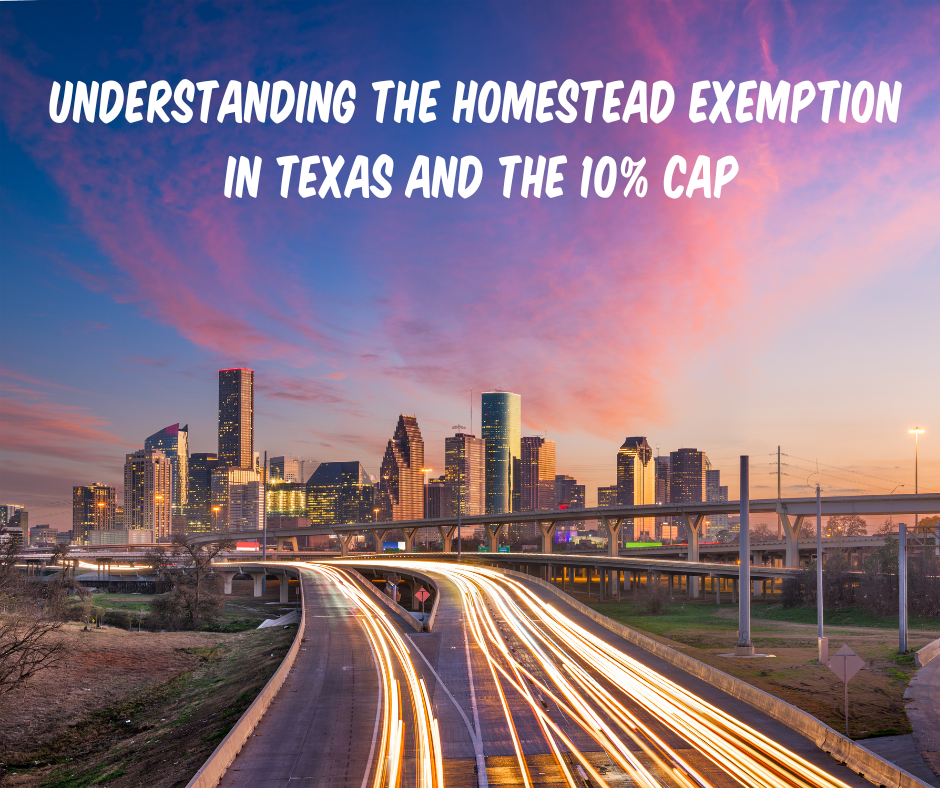Blog > Understanding the Homestead Exemption in Texas and the 10% Cap
 If you're a homeowner in the Lone Star State, it's essential to be familiar with the Texas Homestead Exemption and its associated 10% cap. These provisions can significantly impact your property taxes, providing financial relief and safeguarding your family's primary residence. In this blog post, we'll dive into the details of the Texas Homestead Exemption and the 10% cap, shedding light on how they work and how they can benefit you as a homeowner.
If you're a homeowner in the Lone Star State, it's essential to be familiar with the Texas Homestead Exemption and its associated 10% cap. These provisions can significantly impact your property taxes, providing financial relief and safeguarding your family's primary residence. In this blog post, we'll dive into the details of the Texas Homestead Exemption and the 10% cap, shedding light on how they work and how they can benefit you as a homeowner.What is the Texas Homestead Exemption?
The Texas Homestead Exemption is a legal provision that offers significant tax benefits to homeowners. It is designed to protect the primary residence of Texas residents from excessive property taxes, making homeownership more affordable. To qualify for this exemption, your property must be your primary residence and considered your homestead. This means it's the place where you live and intend to continue living. Second homes and investment properties do not qualify for this exemption.
Key Benefits of the Homestead Exemption:
- Property Tax Reduction: The primary benefit of the Homestead Exemption is a reduction in property taxes. The exemption allows homeowners to exclude a portion of their home's value from property tax calculations, making their annual tax bill more manageable.
- Tax Caps and Limitations: The 10% cap is a crucial component of the Homestead Exemption, and we'll delve deeper into it in the next section.
The 10% cap is a limitation on the increase in your homestead's appraised value. In Texas, property values can fluctuate, and this cap helps protect homeowners from drastic property tax hikes due to market fluctuations.
Here's how it works:
That protection does not start until after you have the Homestead Exemption in place for over a year. You have a “gap year” between the purchase (and declaring homestead exemption) and having the 10% limitation on increases in appraised value
Example:
- June 22, 2023 John Smith buys the home of Roger Moore.
- January 1, 2024 is the first January 1st John Smith is recorded as having the residence homestead tax exemption on the property.
- January 1, 2025 the 10% cap on increases of the appraised value will take effect. It's important to note that this 10% cap does not apply to new improvements or construction on your property. Any new additions or substantial renovations can result in an increase in your property's assessed value.

